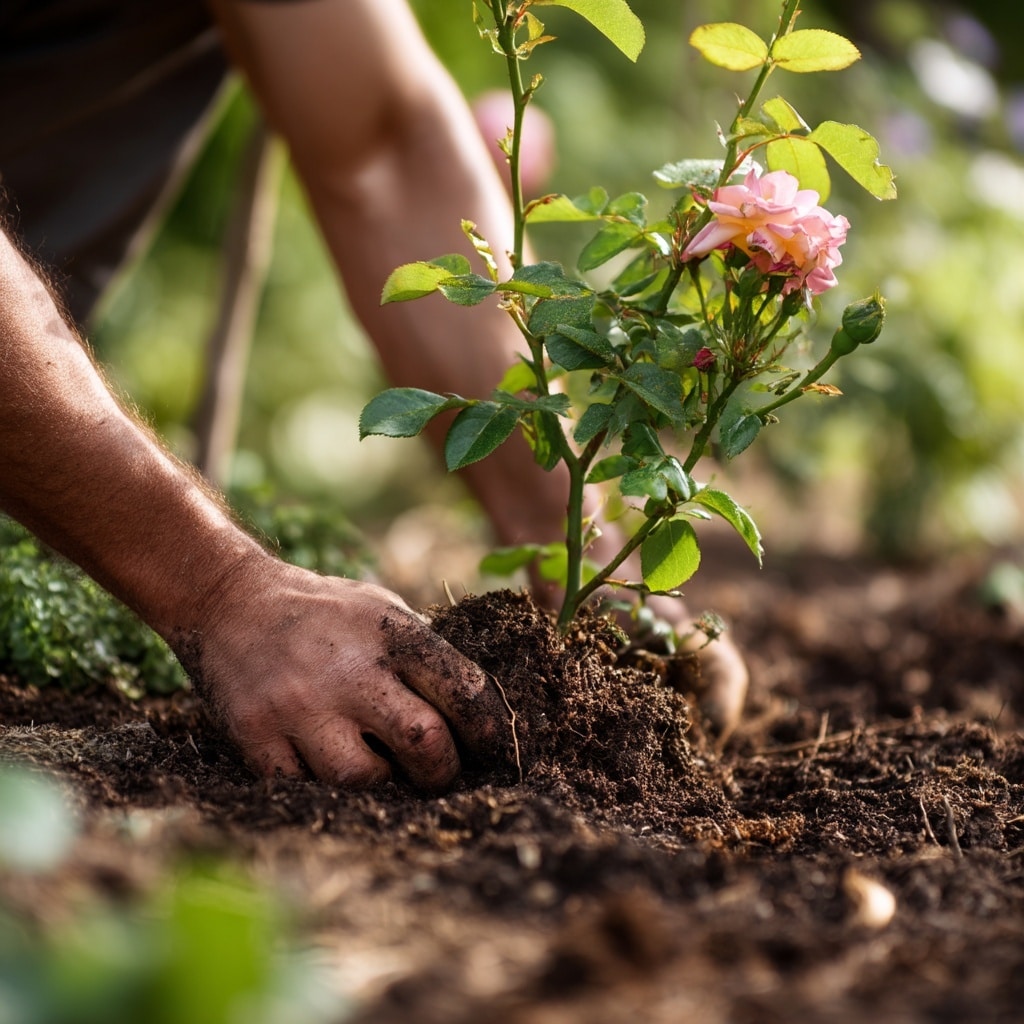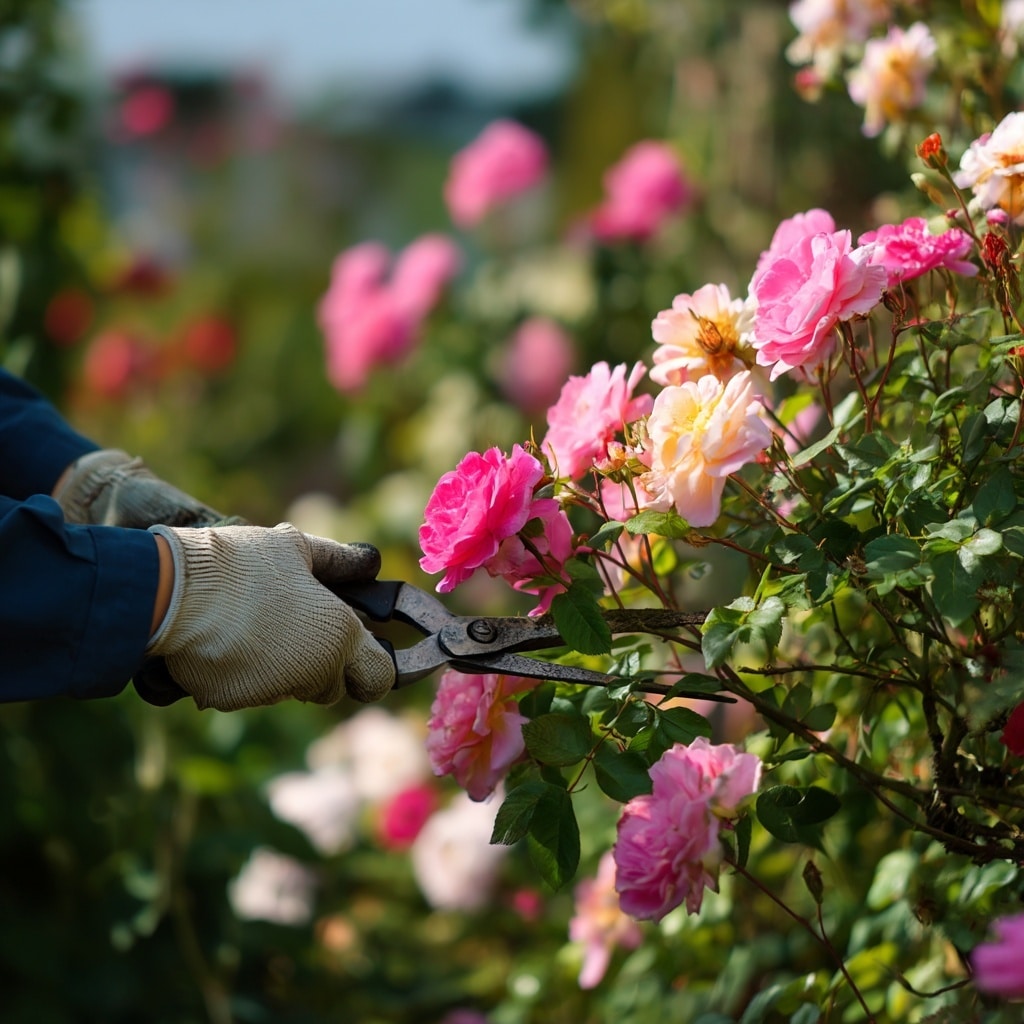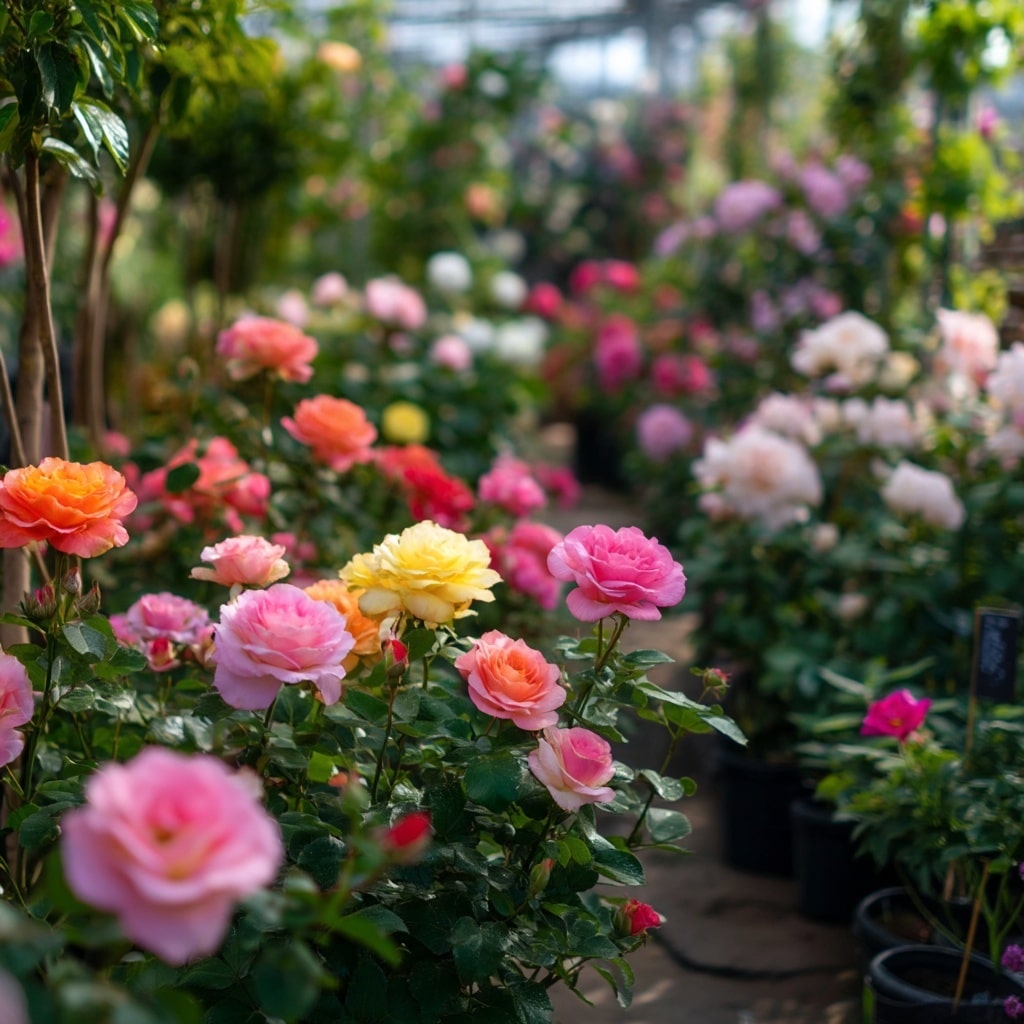Roses are among the most beloved flowers in any garden, admired for their timeless beauty, rich fragrance, and incredible variety. From classic red blooms to delicate pastel shades, roses add elegance and charm to both formal landscapes and casual backyard spaces. Whether you’re planting your first bush or refining your existing rose garden, understanding the basics is key to growing healthy, vibrant roses year after year.
With just a bit of planning and consistent care, roses can thrive in many environments. In this guide, you’ll find ten practical tips that cover everything from choosing the right varieties to maintaining strong blooms through every season. These tips are designed to help gardeners of all levels achieve success and enjoy the full potential of these stunning flowers.
Table of Contents
1.Choosing the Right Roses
Selecting the right roses for your garden is the first and most important step to long-term success. With hundreds of varieties available, it’s essential to choose types that match your climate, space, and maintenance preferences.
Consider Your Climate
Not all roses perform the same in every region. If you live in a colder area, look for cold-hardy varieties that can handle frost and shorter growing seasons. In warmer zones, heat- and drought-tolerant roses are your best bet. Local garden centers often carry cultivars well-suited for your specific region, so it’s worth asking for advice before buying.
Match the Style to Your Needs
Roses come in several main types, each with its own appeal:
- Hybrid Tea Roses – Known for their large, classic blooms and long stems. Great for cutting gardens.
- Floribunda Roses – Produce clusters of flowers and bloom repeatedly throughout the season.
- Shrub Roses – Hardy, disease-resistant, and excellent for mass plantings or hedges.
- Climbing Roses – Perfect for trellises, fences, or arbors. They add height and drama to any space.
- Miniature Roses – Compact and ideal for containers or small gardens.
Each type has different growth habits and bloom patterns, so consider how much space you have and the overall look you’re going for.
Bare-Root vs. Container-Grown Roses
When buying roses, you’ll likely choose between:
- Bare-root roses – Dormant plants sold without soil, typically shipped in early spring. They’re budget-friendly and easy to plant if timed correctly.
- Container-grown roses – Already potted and actively growing. They can be planted any time during the growing season and often bloom sooner.
Both options can thrive when planted and cared for properly, so choose based on convenience and your local planting window.
2.Preparing Your Garden

Before planting roses, it’s essential to prepare a space where they can thrive. A little effort in the beginning can make a big difference in how well your roses grow, bloom, and resist disease over time.
Find the Ideal Location
Roses need at least 6 hours of direct sunlight each day to produce healthy blooms. Morning sun is especially beneficial, as it dries moisture from the leaves and reduces the risk of fungal issues. Choose a location with good air circulation, but avoid areas with strong, drying winds.
If you’re planting near a wall or fence, ensure there’s enough space for air to flow around the plant. This will help prevent common rose diseases like black spot and mildew.
Prepare the Soil
Healthy soil is the foundation for beautiful roses. These plants prefer:
- Well-draining soil
- A pH between 6.0 and 6.5
- Loamy texture rich in organic matter
If your soil is sandy or heavy clay, improve it by mixing in compost, aged manure, or leaf mold. This boosts nutrients and improves structure, helping your roses establish strong roots.
You can test your soil’s pH with a simple home test kit or meter. Amend it as needed with lime (to raise pH) or sulfur (to lower pH) to reach the optimal range.
Improve Drainage if Needed
Roses don’t like “wet feet.” Poor drainage leads to root rot and other serious issues. If your garden soil holds water too long:
- Plant roses in raised beds
- Mix in coarse sand or perlite
- Avoid low-lying areas that stay soggy after rain
Proper spacing is also important. Leave enough room between plants to encourage airflow and give roots space to spread.
3.Planting Your Roses

Once your garden is ready, it’s time to get your roses in the ground. Proper planting gives your roses a strong start and helps them establish quickly for healthier growth throughout the season.
Best Time to Plant
The ideal time to plant roses is in early spring after the last frost or in early fall when temperatures are cooler but the soil is still warm. Spring planting gives the plant time to develop strong roots before the summer heat. If you’re planting bare-root roses, they should be planted while dormant—usually March to April, depending on your zone.
For container-grown roses, planting can be done any time the ground isn’t frozen, though spring is still optimal for strong establishment.
Watering and Fertilizing
After planting, water your roses deeply and consistently, especially during the first few weeks. Deep watering encourages root growth and helps prevent shallow root systems that are more vulnerable to stress.
- Use a soaker hose or drip irrigation to keep water off the foliage and reduce the risk of disease.
- Avoid overhead watering whenever possible.
When it comes to fertilizer:
- Wait 2–3 weeks after planting before applying fertilizer to new roses.
- Use a balanced rose fertilizer or one high in phosphorus to support blooming.
- Follow label directions—over-fertilizing can burn roots or encourage weak, leggy growth.
Caring for Newly Planted Roses
Newly planted roses need gentle care:
- Mulch around the base with compost or shredded bark to retain moisture and suppress weeds.
- Avoid pruning or cutting flowers for the first few weeks.
- Watch for signs of transplant shock—wilting or yellowing leaves—and adjust watering as needed.
- Don’t expect full blooming in the first season. Focus on establishing healthy growth instead.
A strong start leads to a full season of vibrant, healthy roses in future years.
4.Caring for Established Roses

Once your roses are settled and growing, regular care is key to keeping them healthy, vigorous, and blooming all season long. With the right maintenance routine, established roses can thrive for years.
Pruning and Deadheading
Pruning keeps your roses looking tidy and encourages better flowering. In early spring, just as new growth begins:
- Remove dead, damaged, or weak canes
- Cut back crossing branches to improve airflow
- Shape the plant by trimming to outward-facing buds
For most rose varieties, prune to about one-third of the plant’s height, depending on how full you want it to grow.
Deadheading is also important. Removing faded blooms directs the plant’s energy into producing more flowers instead of developing seeds. Snip just above the first set of five healthy leaves for best results.
Dealing with Pests and Diseases
Even healthy roses can fall victim to common issues like aphids, spider mites, black spot, and powdery mildew. Stay ahead of problems by:
- Inspecting plants weekly
- Spraying aphids with a strong stream of water or using insecticidal soap
- Removing diseased leaves and disposing of them (don’t compost)
- Applying organic fungicides as a preventative during humid weather
Choosing disease-resistant varieties and practicing good spacing and watering habits also go a long way in preventing outbreaks.
Winter Protection
In colder climates, established roses need some help surviving the winter:
- Stop fertilizing 6–8 weeks before the first frost to allow the plant to harden off
- Reduce watering gradually
- Mound compost or mulch around the base of the plant for root insulation
- In very cold zones, wrap plants in burlap or use rose cones for added protection
Roses are surprisingly resilient when properly prepared for the off-season.
5.Troubleshooting Common Rose Problems

Even with the best care, roses can face a few challenges. Knowing how to recognize and fix common problems will keep your plants healthy and blooming all season long.
Pests to Watch For
Several insects can target roses, but they’re manageable with routine checks and quick action:
- Aphids – Tiny green or black bugs that cluster on new growth. Blast them off with water or use insecticidal soap.
- Spider Mites – Cause speckled, dry leaves and fine webbing. Treat with neem oil or miticides.
- Japanese Beetles – Metallic pests that chew on leaves and flowers. Handpick and drop into soapy water, or use row covers if infestations are severe.
Routine monitoring helps catch pests before they do serious damage.
Common Diseases
Diseases often result from too much moisture or poor air circulation. Here are the most frequent rose diseases:
- Black Spot – Round black spots on leaves followed by yellowing. Remove infected leaves and apply organic fungicide.
- Powdery Mildew – White, powdery coating on leaves and buds. Improve airflow and apply sulfur-based sprays.
- Rust – Orange spots on leaf undersides. Remove affected leaves and avoid overhead watering.
Proper spacing, clean-up of fallen leaves, and mulching help reduce disease pressure.
Watering & Soil Issues
Incorrect watering and soil conditions are also common causes of rose stress:
- Overwatering leads to root rot; water only when the top few inches of soil feel dry.
- Underwatering causes wilting and leaf drop—deep watering once or twice a week is usually ideal.
- Poor drainage can be fixed with raised beds or by amending the soil with compost and sand.
Heat and Environmental Stress
Extreme heat or wind can damage roses. If blooms are crisping or leaves are browning:
- Provide afternoon shade during heatwaves
- Mulch generously to retain moisture
- Shield young plants from strong winds using a trellis or garden screen
Even mature roses benefit from a little protection in extreme conditions.
6.Frequently Asked Questions About Roses

If you’re new to growing roses or troubleshooting specific issues, these common questions and answers can help you get better results and feel more confident in your rose garden.
Can I Grow Roses from Cuttings?
Yes, propagating roses from cuttings is a simple and cost-effective way to grow more plants. Choose a healthy stem, cut it at a 45-degree angle, and remove the lower leaves. Dip the end in rooting hormone, plant it in moist potting mix, and cover with a plastic bag or dome to maintain humidity. Roots usually develop in a few weeks.
Are Roses Suitable for Containers?
Absolutely. Many roses, especially miniature or patio varieties, grow well in pots. Choose a container at least 18 inches wide with drainage holes. Use high-quality potting mix and water regularly. Container roses need more frequent feeding and watering than in-ground plants but are perfect for small spaces.
How Do I Get Bigger Blooms?
To grow larger roses, focus on:
- Sunlight: At least 6 hours daily
- Feeding: Use a phosphorus-rich fertilizer
- Watering: Deep and consistent watering
- Pruning: Remove weak growth to focus energy on strong canes
- Deadheading: Promotes more and better flowers
How Should I Care for Cut Roses in a Vase?
To keep vase roses fresh:
- Cut stems at a 45° angle under water
- Remove leaves that will sit below the water line
- Use a clean vase with fresh, cool water and flower food
- Change water every 2–3 days and recut stems
- Keep the arrangement away from heat and direct sunlight
Why Aren’t My Roses Blooming?
Several factors can affect blooming:
- Lack of sunlight
- Too much nitrogen fertilizer (leads to leafy growth)
- Improper pruning
- Young age (some roses take a few years to mature)
Make sure your roses have proper conditions and be patient—sometimes they just need more time to shine.
7.Final Thoughts

Growing roses doesn’t have to be intimidating. With the right preparation, thoughtful care, and a little patience, anyone can enjoy the beauty and fragrance of blooming roses right in their own garden. From choosing climate-appropriate varieties to watering, pruning, and protecting against pests, each step plays a role in building a strong, healthy plant.
Whether you’re starting with a single rose bush or filling an entire flower bed, these ten tips will help you grow roses that are not only beautiful but also resilient season after season. Keep observing, keep learning, and your garden will reward you with lasting color and joy.






